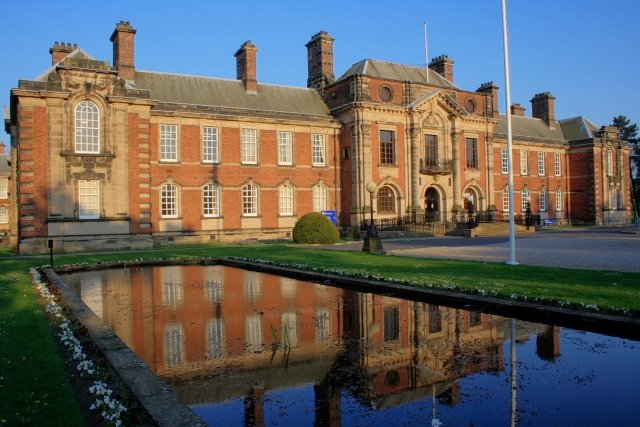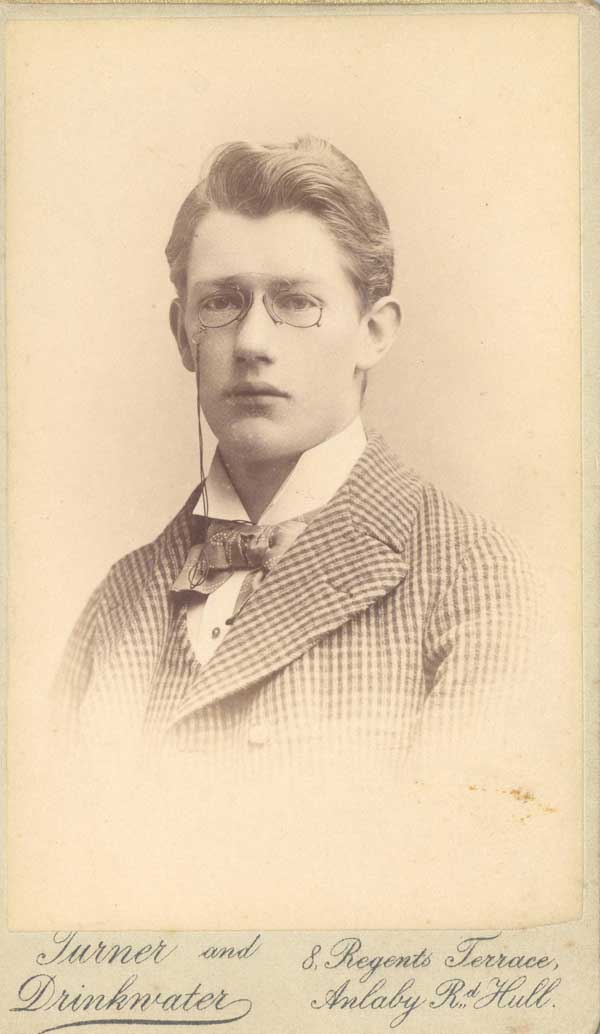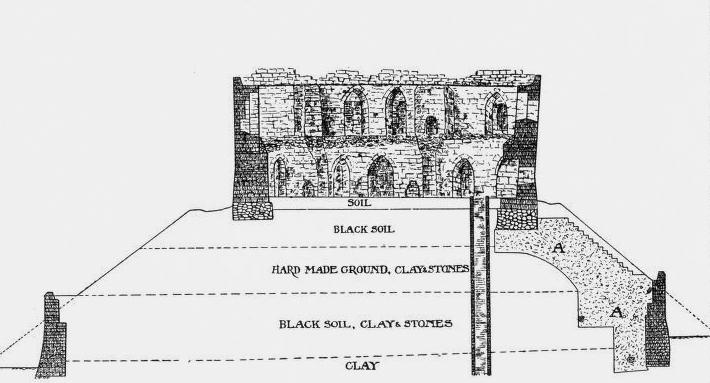|
Peter Atkinson (architect, Born 1735)
Peter Atkinson (1735–1805) was an English architect. Biography He was born at or near Ripon and started work as a carpenter. He later became an assistant to John Carr and was employed at Buxton, Harewood and elsewhere. In 1786 he became responsible for maintaining York's corporation property, and subsequently took over Carr's extensive works in Yorkshire and further north. The Atkinson family of York architects continued after Atkinson's death. His son, Peter, himself had sons John Bownas Atkinson (1807–1874) and William Atkinson (architect, born 1811). Before their father's death, the two sons had taken over and for the next thirty plus years they were the most prolific of the city's architects. In 1877 William took James Demaisne (1842–1911) as partner. Works Among Atkinson's works were: * No. 18 Blake Street, York, c. 1789 * Monk Bridge, York, 1794 (later widened in 1924–26) * Hackness Hall, 1797, a large mansion for Sir R.V.B. Johnstone at Hackness (near Scarbo ... [...More Info...] [...Related Items...] OR: [Wikipedia] [Google] [Baidu] |
Blake Street (York)
Blake Street is a road in the city centre of York, in England. History The area occupied by the street lay within the walls of Roman Eboracum, but the route was not established until later. The Blake Street Hoard, a coin hoard of 35 silver ''denarii'' dating to the first century AD was found here in 1975. The York Civic Trust claims that it emerged in the Anglian period, as a shortcut between the Porta Principalis Dextra and the Porta Praetoria, now St Helen's Square and Bootham Bar. The street was first recorded in the 1150s. There are three main theories of the origin of its name: that "Blake" comes from the words for "white" or "bleaching", or from the Viking name "Bleiki". The church of St Wilfrid, Blake Street, was first mentioned in the 1140s and lay in the middle of the western side of the street. It was demolished in 1585, and for religious purposes, the street thereafter fell into the parish of St Michael le Belfrey, although the civil parish survived until 1900. ... [...More Info...] [...Related Items...] OR: [Wikipedia] [Google] [Baidu] |
Walter Brierley
Walter Henry Brierley (1862–1926) was a York architect who practised in the city for 40 years. He is known as "the Yorkshire Lutyens" or the "Lutyens of the North". He is also credited with being a leading exponent of the "Wrenaissance" style - incorporating elements of Christopher Wren. Brierley's works include civic buildings, churches, schools and private houses (including his own home, Bishopsbarns) and are located mainly in York, North Yorkshire and the north of England. He was responsible for over 300 buildings between 1885 and the time of his death in 1926. He was the architect for the York Diocese. The Borthwick Institute in York holds an archive of the Atkinson Brierley architectural practice, a practice that lives on as Brierley Groom, the oldest architectural firm in the UK having continuously practised since 1750. In 2013 Pocklington School unveiled a clock based on plans drawn up by Brierley 116 years earlier and found at the Borthwick in 2006. A celebr ... [...More Info...] [...Related Items...] OR: [Wikipedia] [Google] [Baidu] |
19th-century English Architects
The 19th (nineteenth) century began on 1 January 1801 ( MDCCCI), and ended on 31 December 1900 ( MCM). The 19th century was the ninth century of the 2nd millennium. The 19th century was characterized by vast social upheaval. Slavery was abolished in much of Europe and the Americas. The First Industrial Revolution, though it began in the late 18th century, expanding beyond its British homeland for the first time during this century, particularly remaking the economies and societies of the Low Countries, the Rhineland, Northern Italy, and the Northeastern United States. A few decades later, the Second Industrial Revolution led to ever more massive urbanization and much higher levels of productivity, profit, and prosperity, a pattern that continued into the 20th century. The Islamic gunpowder empires fell into decline and European imperialism brought much of South Asia, Southeast Asia, and almost all of Africa under colonial rule. It was also marked by the collapse of the la ... [...More Info...] [...Related Items...] OR: [Wikipedia] [Google] [Baidu] |
18th-century English Architects
The 18th century lasted from January 1, 1701 ( MDCCI) to December 31, 1800 ( MDCCC). During the 18th century, elements of Enlightenment thinking culminated in the American, French, and Haitian Revolutions. During the century, slave trading and human trafficking expanded across the shores of the Atlantic, while declining in Russia, China, and Korea. Revolutions began to challenge the legitimacy of monarchical and aristocratic power structures, including the structures and beliefs that supported slavery. The Industrial Revolution began during mid-century, leading to radical changes in human society and the environment. Western historians have occasionally defined the 18th century otherwise for the purposes of their work. For example, the "short" 18th century may be defined as 1715–1789, denoting the period of time between the death of Louis XIV of France and the start of the French Revolution, with an emphasis on directly interconnected events. To historians who expand ... [...More Info...] [...Related Items...] OR: [Wikipedia] [Google] [Baidu] |
1805 Deaths
Eighteen or 18 may refer to: * 18 (number), the natural number following 17 and preceding 19 * one of the years 18 BC, AD 18, 1918, 2018 Film, television and entertainment * ''18'' (film), a 1993 Taiwanese experimental film based on the short story ''God's Dice'' * ''Eighteen'' (film), a 2005 Canadian dramatic feature film * 18 (British Board of Film Classification), a film rating in the United Kingdom, also used in Ireland by the Irish Film Classification Office * 18 (''Dragon Ball''), a character in the ''Dragon Ball'' franchise * "Eighteen", a 2006 episode of the animated television series '' 12 oz. Mouse'' Music Albums * ''18'' (Moby album), 2002 * ''18'' (Nana Kitade album), 2005 * '' 18...'', 2009 debut album by G.E.M. Songs * "18" (5 Seconds of Summer song), from their 2014 eponymous debut album * "18" (One Direction song), from their 2014 studio album ''Four'' * "18", by Anarbor from their 2013 studio album ''Burnout'' * "I'm Eighteen", by Alice Cooper common ... [...More Info...] [...Related Items...] OR: [Wikipedia] [Google] [Baidu] |
1735 Births
Events January–March * January 2 – Alexander Pope's poem '' Epistle to Dr Arbuthnot'' is published in London. * January 8 – George Frideric Handel's opera '' Ariodante'' is premièred at the Royal Opera House in Covent Garden, London. * February 3 – All 256 people on board the Dutch East India Company ships '' Vliegenthart'' and ''Anna Catherina'' die when the two ships sink in a gale off of the Netherlands coast. The wreckage of ''Vliegenthart'' remains undiscovered until 1981. * February 14 – The '' Order of St. Anna'' is established in Russia, in honor of the daughter of Peter the Great. * March 10 – The Russian Empire and Persia sign the Treaty of Ganja, with Russia ceding territories in the Caucasus mountains to Persia, and the two rivals forming a defensive alliance against the Ottoman Empire. * March 11 – Abraham Patras becomes the Governor-General of the Dutch East Indies (now Indonesia) upon the death of Dir ... [...More Info...] [...Related Items...] OR: [Wikipedia] [Google] [Baidu] |
People From Ripon
A person ( : people) is a being that has certain capacities or attributes such as reason, morality, consciousness or self-consciousness, and being a part of a culturally established form of social relations such as kinship, ownership of property, or legal responsibility. The defining features of personhood and, consequently, what makes a person count as a person, differ widely among cultures and contexts. In addition to the question of personhood, of what makes a being count as a person to begin with, there are further questions about personal identity and self: both about what makes any particular person that particular person instead of another, and about what makes a person at one time the same person as they were or will be at another time despite any intervening changes. The plural form "people" is often used to refer to an entire nation or ethnic group (as in "a people"), and this was the original meaning of the word; it subsequently acquired its use as a plural form of p ... [...More Info...] [...Related Items...] OR: [Wikipedia] [Google] [Baidu] |
Warthill
Warthill is a village and civil parish in the Ryedale district of North Yorkshire, England, six miles north-east of York and 14 miles south-west of Malton. The village has one public house, ''The Agar Arms'', and a Church of England primary school (established in 1863), with about forty pupils. Warthill is home to St Mary's Church, which was built in the 19th century and is a good example of Victorian Gothic architecture. Brockfield Hall, a Georgian house completed in 1807, is situated nearby. It was built for Benjamin Agar by Peter Atkinson senior who worked in the office of John Carr (architect). Brockfield has an oval entry hall with cantilevered staircase. The house displays fine art and furniture, and mementos associated with the Fitzalan Howard family. There is also an unusual collection of glass walking sticks. The house is rectangular in plan, with a hipped slate roof. The most immediately noticeable feature is a large Venetian window on the first floor which is ... [...More Info...] [...Related Items...] OR: [Wikipedia] [Google] [Baidu] |
Bootham
Bootham is a street in the city of York, in England, leading north out of the city centre. It is also the name of the small district surrounding the street. History The street runs along a ridge of slightly higher ground east of the River Ouse. It follows the line of Dere Street, the main Roman road from Eboracum to Cataractonium. Many Roman remains have been found in the area, which was principally used for burials. The street's name probably derives from the Norse for "the place of the booths", referring to the poor huts in the area. From the Roman period, an alternative route from the bridge over the Ouse ran a short distance west of Bootham, and in the Saxon and Viking Jorvik periods, that was the main road to the north-west. However, after St Mary's Abbey was constructed in this area, that road was blocked, and Bootham became the principal route. In 1260, the abbey was given permission to construct a wall, part of which runs immediately west of the southern part of ... [...More Info...] [...Related Items...] OR: [Wikipedia] [Google] [Baidu] |
South Ormsby
South Ormsby, sometimes called South Ormesby, is a village in the East Lindsey district of Lincolnshire, England. It is situated west from the A16 road, south from Louth and 7 miles north-east from Horncastle. With the nearby hamlet of Ketsby, it forms the civil parish of South Ormesby with Ketsby. The population is included in the civil parish of Brinkhill. The 15th-century church of St Leonard's is approached by a short climb up a path next to the old school house. Ormsby Hall, built by James Paine in 1752, stands in a wooded parkland complete with lake. The village has a public house, the Massingberd Arms, and a motor repair garage. The Greenwich Prime Meridian The historic prime meridian or Greenwich meridian is a geographical reference line that passes through the Royal Observatory, Greenwich, in London, England. The modern IERS Reference Meridian widely used today is based on the Greenwich mer ... line passes through the village. External links * East L ... [...More Info...] [...Related Items...] OR: [Wikipedia] [Google] [Baidu] |
York Castle Museum
York Castle Museum is a museum located in York, North Yorkshire, England, on the site of York Castle, which was originally built by William the Conqueror in 1068. The museum itself was founded by John L. Kirk in 1938, and is housed in prison buildings which were built on the site of the castle in the 18th century, the debtors' prison (built in 1701–05 using stone from the ruins of the castle) and the female prison (built 1780–85). Museum and history Foundation In 1931 John Lamplugh Kirk, a physician and amateur archaeologist based in Pickering, North Yorkshire advertised for expressions of interest from sites who wished to house his large collection of objects relating to the study of Social History. Although he received responses from sites in Middlesbrough, Wakefield, Batley, Doncaster and York, it was the latter which was ultimately successful. The Female Prison was bought by the York Corporation in 1934 and modified to house the Kirk Collection of "bygones", opening a ... [...More Info...] [...Related Items...] OR: [Wikipedia] [Google] [Baidu] |
York Castle
York Castle is a fortified complex in the city of York, England. It consists of a sequence of castles, prisons, law courts and other buildings, which were built over the last nine centuries on the south side of the River Foss. The now-ruined keep of the medieval Norman castle is commonly referred to as Clifford's Tower. Built originally on the orders of William I to dominate the former Viking city of Jórvík, the castle suffered a tumultuous early history before developing into a major fortification with extensive water defences. After a major explosion in 1684 rendered the remaining military defences uninhabitable, York Castle continued to be used as a jail and prison until 1929. The first motte and bailey castle on the site was built in 1068 following the Norman conquest of York. After the destruction of the castle by rebels and a Viking army in 1069, York Castle was rebuilt and reinforced with extensive water defences, including a moat and an artificial lake. York Castl ... [...More Info...] [...Related Items...] OR: [Wikipedia] [Google] [Baidu] |




_1938.jpg)


